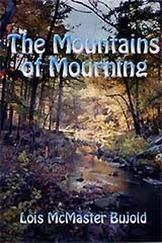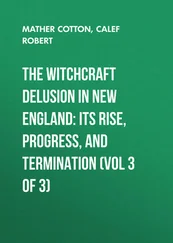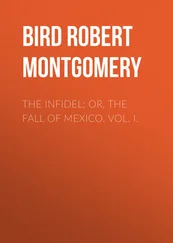Robert Forbes - The Lyon in Mourning, Vol. 1
Здесь есть возможность читать онлайн «Robert Forbes - The Lyon in Mourning, Vol. 1» — ознакомительный отрывок электронной книги совершенно бесплатно, а после прочтения отрывка купить полную версию. В некоторых случаях можно слушать аудио, скачать через торрент в формате fb2 и присутствует краткое содержание. Жанр: foreign_antique, foreign_prose, Биографии и Мемуары, на английском языке. Описание произведения, (предисловие) а так же отзывы посетителей доступны на портале библиотеки ЛибКат.
- Название:The Lyon in Mourning, Vol. 1
- Автор:
- Жанр:
- Год:неизвестен
- ISBN:нет данных
- Рейтинг книги:3 / 5. Голосов: 1
-
Избранное:Добавить в избранное
- Отзывы:
-
Ваша оценка:
- 60
- 1
- 2
- 3
- 4
- 5
The Lyon in Mourning, Vol. 1: краткое содержание, описание и аннотация
Предлагаем к чтению аннотацию, описание, краткое содержание или предисловие (зависит от того, что написал сам автор книги «The Lyon in Mourning, Vol. 1»). Если вы не нашли необходимую информацию о книге — напишите в комментариях, мы постараемся отыскать её.
The Lyon in Mourning, Vol. 1 — читать онлайн ознакомительный отрывок
Ниже представлен текст книги, разбитый по страницам. Система сохранения места последней прочитанной страницы, позволяет с удобством читать онлайн бесплатно книгу «The Lyon in Mourning, Vol. 1», без необходимости каждый раз заново искать на чём Вы остановились. Поставьте закладку, и сможете в любой момент перейти на страницу, на которой закончили чтение.
Интервал:
Закладка:
Robert Forbes
The Lyon in Mourning, Vol. 1 / or a collection of speeches, letters, journals, etc. relative to the affairs of Prince Charles Edward Stuart
The Lyon in Mourning is a collection of Journals, Narratives, and Memoranda relating to the life of Prince Charles Edward Stuart at and subsequent to the Jacobite Rebellion of 1745. The formation of this collection was to a great extent the life-work of the Rev. Robert Forbes, M.A., Bishop of Ross and Caithness.
He was the son of Charles Forbes, a schoolmaster in the parish of Rayne, Aberdeenshire, and of Marjory Wright, and was born there in 1708, his baptism being recorded in the parochial register as having taken place on 4th May of that year. He must have been a studious youth, as he was sent to Marischal College, Aberdeen, in or about 1722, at the early age of fourteen, and graduated there as Master of Arts in 1726. He then proceeded to qualify himself for orders in the Scottish Episcopal Church, and coming to Edinburgh in June 1735, he was there ordained priest by Bishop Freebairn. In December of that year he became assistant to the Rev. William Law at Leith, and soon afterwards, at the request of the congregation, was appointed his colleague. At Leith, it may be said, he lived and laboured for the remainder of his life.
Like most of the Episcopalians of that day, he was an ardent Jacobite, indeed one of the most ardent, and but for a timely interposition of the 'hated Hanoverian' government would not improbably have shared the fate of some of his brethren whose end he chronicles. In that case there would have been no Lyon in Mourning , and it is but fair to say that though The Lyon can never be considered, and does not pretend to be, an impartial relation of the events with which it deals, our literature of the Rebellion of 1745 would have been greatly the poorer by its absence. Nay, it may even be said that, but for the continuous energy and single-eyed purpose of Bishop Forbes in this work, much of what is now known on this subject would never have come to light.
On hearing of the advent of Prince Charles Edward in the West Highlands, Mr. Forbes, with two Episcopalian clergymen and some other gentlemen, started off with the intention of sharing his fortunes, but all were arrested on suspicion at St. Ninians, near Stirling, and imprisoned. He notes the fact in the Baptismal Register of his congregation, as follows: 'A great interruption has happened by my misfortune of being taken prisoner at St. Ninian's, in company with the Rev. Messrs. Thomas Drummond and John Willox, Mr. Stewart Carmichael and Mr. Robert Clark, and James Mackay and James Carmichael, servants, upon Saturday, the seventh day of September 1745, and confined in Stirling Castle till February 4th, 1746, and in Edinburgh Castle till May 29th of said year. We were seven in number, taken upon the seventh day of the week, the seventh day of the month, and the seventh month of the year, reckoning from March.' 1 1 Journals, etc., of Bishop Forbes , by the Rev. J. B. Craven, 1886, p. 12. This register is still extant, and one of its counterparts, the register of marriages performed by the Bishop, is printed in the Scottish Antiquary , vol. viii. pp. 125-129. See also p. 169. One of the baptisms was that of John Skinner, author of 'Tullochgorum,' who on 8th June 1740 went to Mr. Forbes in his room, and was re-baptized, declaring that 'he was not satisfied with the sprinkling of a layman, a Presbyterian teacher, he had received in his infancy.'
An incident of the roping of these prisoners at their removal from Stirling to Edinburgh is narrated by the author. 2 2 See ff. 916, 987.
After his release from imprisonment Mr. Forbes appears to have been invited to reside in the house of one of the most wealthy members of his congregation, Dame Magdalene Scott, Lady Bruce of Kinross, the widow of Sir William Bruce of Kinross. She resided in the Citadel of Leith, and was a strong Jacobite; Mr. Forbes tells how her house was on more than one occasion the special object of the Government's concern, as the Prince himself was supposed to be concealed there. 3 3 See ff. 940, et seq.
For this lady Mr. Forbes cherished the highest esteem, speaking of her as 'the worthy person, the protection of whose roof I enjoy.' 4 4 See f. 325.
She died in June 1752, aged 82; but before that event took place he had left her house, on the occasion of his marriage to his first wife, Agnes Gairey. This was in 1749, 5 5 See f. 1749.
and the lady died on 4th April of the following year. 6 6 Craven's Journals, etc. , p. 11.
He afterwards married, as his second wife, Rachel, second daughter of Ludovick Houston of Johnstone, in Renfrewshire, of whom he makes frequent mention in The Lyon . She was in fullest sympathy with her husband's Jacobite proclivities, and occasionally sent presents to the Prince abroad.
In 1762 Mr. Forbes was chosen and appointed Bishop of Ross and Caithness, and in 1767 he was elected Bishop of Aberdeen by a majority of the local clergy, but the College of Bishops disallowed the election in his case, and another was appointed. How keenly Mr. Forbes felt this action will be seen from his conversation and correspondence with Bishop Gordon of London. He twice visited his diocese in the north, and kept full journals of his progresses. 7 7 These have been printed, along with a sketch of his life and a history of the Episcopal Church in Ross, in the work by the Rev. J. B. Craven, pp. 139-327.
They are similar to a diary of his visit to Moffat, which is inserted in The Lyon , 8 8 See ff. 1915, et seq.
and which was doubtless so inserted because of its concern with certain Jacobite matters; but it is also of interest on other accounts.
In later life, when, from having less to chronicle, he was not so taken up with this work, Bishop Forbes was an occasional contributor to the Edinburgh Magazine , in which he published a number of topographical and antiquarian articles. Several of these, relating to Roslin Chapel, were collected and printed in 1774, under the nom de plume of Philo-Roskelynsis . He died at Leith on 18th November 1775 and was buried in the Maltman's Aisle in South Leith parish church. He does not appear to have had any children.
The origin of this collection, The Lyon in Mourning , probably dates from the author's imprisonment in Stirling Castle or Edinburgh Castle. In the latter place he was brought into contact with some of those who had taken an active share in the cause of Prince Charles, and it was, doubtless, while listening to their narratives that he was inspired with the idea of committing them to writing. Why he called his collection by the name it bears, he nowhere explains. It has been suggested that it was 'in allusion to the woe of Scotland for her exiled race of princes;' the Lyon being the heraldic representative of the nation. Bishop Forbes, in his own mind, no doubt, identified the Scottish nation with the comparatively few Jacobites within the country.
But whatever may be said about the title, the Bishop's purpose was, as he declared, to make up 'a Collection of Journals and other papers relative to the important and extraordinary occurrences of life that happened within a certain period of time,' and which, he adds, 'will serve to fix a distinguishing mark upon that period as a most memorable æra to all posterity… I have,' he proceeds to say, 'a great anxiety to make the Collection as compleat and exact as possible for the instruction of future ages in a piece of history the most remarkable and interesting that ever happened in any age or country.' Nor was it only what particularly concerned that 'certain Young Gentleman' (as they were wont to style the Prince) that Bishop Forbes set himself to gather information, but also whatever could be gleaned about those who followed his fortunes. He was even desirous that every act of kindness performed by the victorious Hanoverians towards their vanquished enemies, should be cherished with the names of the doers, that they with the others 'may be carefully recorded and transmitted to posterity, according to truth and justice.'
Читать дальшеИнтервал:
Закладка:
Похожие книги на «The Lyon in Mourning, Vol. 1»
Представляем Вашему вниманию похожие книги на «The Lyon in Mourning, Vol. 1» списком для выбора. Мы отобрали схожую по названию и смыслу литературу в надежде предоставить читателям больше вариантов отыскать новые, интересные, ещё непрочитанные произведения.
Обсуждение, отзывы о книге «The Lyon in Mourning, Vol. 1» и просто собственные мнения читателей. Оставьте ваши комментарии, напишите, что Вы думаете о произведении, его смысле или главных героях. Укажите что конкретно понравилось, а что нет, и почему Вы так считаете.












